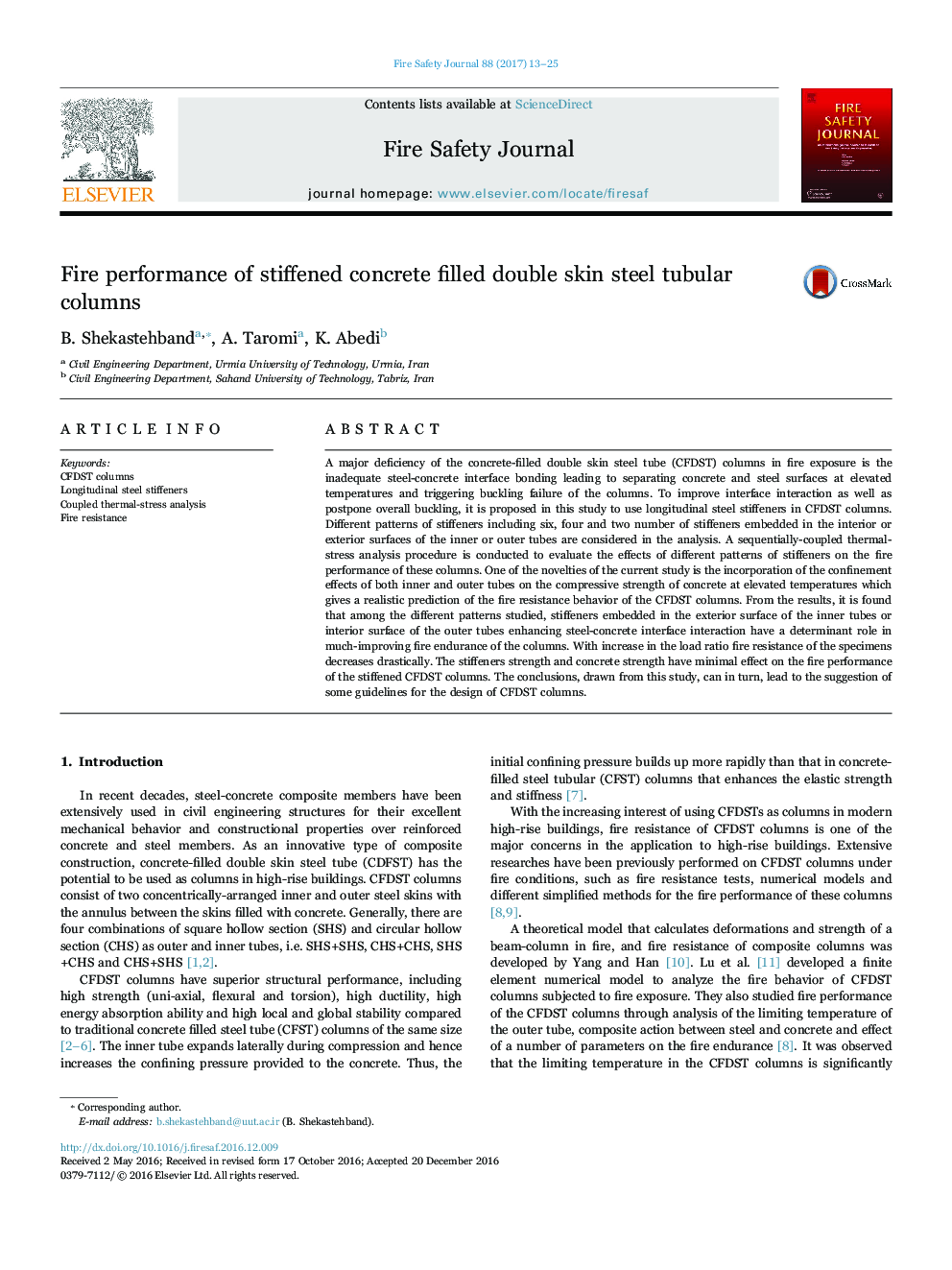| Article ID | Journal | Published Year | Pages | File Type |
|---|---|---|---|---|
| 4920993 | Fire Safety Journal | 2017 | 13 Pages |
Abstract
A major deficiency of the concrete-filled double skin steel tube (CFDST) columns in fire exposure is the inadequate steel-concrete interface bonding leading to separating concrete and steel surfaces at elevated temperatures and triggering buckling failure of the columns. To improve interface interaction as well as postpone overall buckling, it is proposed in this study to use longitudinal steel stiffeners in CFDST columns. Different patterns of stiffeners including six, four and two number of stiffeners embedded in the interior or exterior surfaces of the inner or outer tubes are considered in the analysis. A sequentially-coupled thermal-stress analysis procedure is conducted to evaluate the effects of different patterns of stiffeners on the fire performance of these columns. One of the novelties of the current study is the incorporation of the confinement effects of both inner and outer tubes on the compressive strength of concrete at elevated temperatures which gives a realistic prediction of the fire resistance behavior of the CFDST columns. From the results, it is found that among the different patterns studied, stiffeners embedded in the exterior surface of the inner tubes or interior surface of the outer tubes enhancing steel-concrete interface interaction have a determinant role in much-improving fire endurance of the columns. With increase in the load ratio fire resistance of the specimens decreases drastically. The stiffeners strength and concrete strength have minimal effect on the fire performance of the stiffened CFDST columns. The conclusions, drawn from this study, can in turn, lead to the suggestion of some guidelines for the design of CFDST columns.
Keywords
Related Topics
Physical Sciences and Engineering
Engineering
Civil and Structural Engineering
Authors
B. Shekastehband, A. Taromi, K. Abedi,
